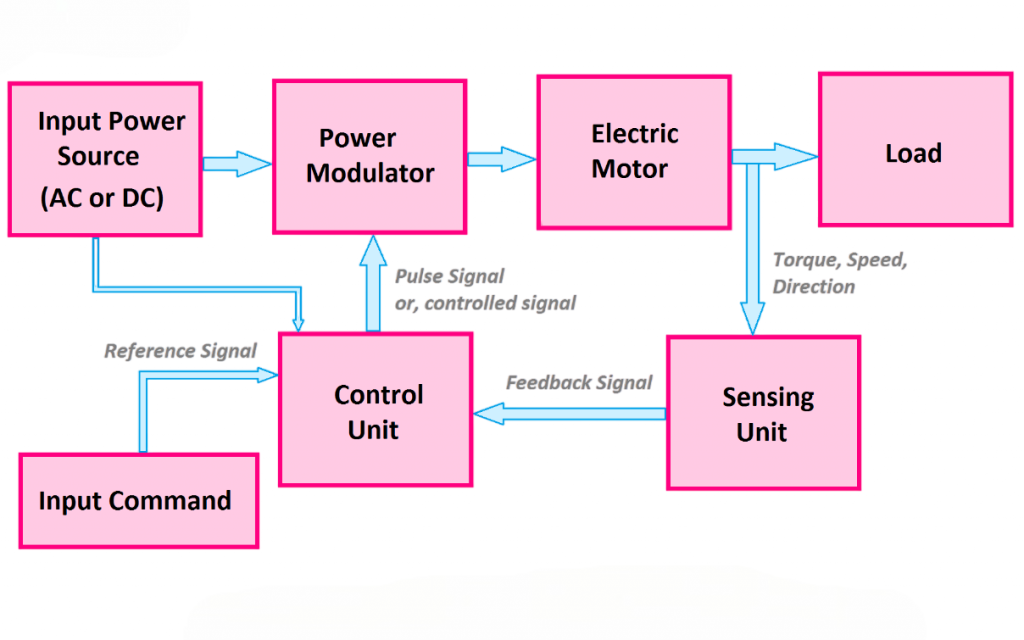
- Electric Vehicle Working Principle
- Energy Flow in EVs
- Battery to Motor Conversion
- Controller Role
- Torque Generation
- Power Transmission
- Acceleration and Braking
- Regenerative Braking Flow
- Motor Drive Cycle
- Charging and Discharging
- Real-World Application
- Conclusion
Electric Vehicle Working Principle
Electric Vehicles (EVs) have transformed the landscape of transportation by offering an energy-efficient, environmentally friendly alternative to internal combustion engine (ICE) vehicles. At the core of this transformation lies the intelligent flow of electric power from the battery to the wheels and back. Understanding the Electric Vehicle Working Principle helps engineers, enthusiasts, and even average consumers appreciate its technological complexity and performance potential. Unlike traditional cars, EVs involve fewer moving parts but require intricate electrical and electronic coordination. To explore how intelligent systems enhance this coordination, explore Artificial Intelligence Training a hands-on course that covers machine learning, neural networks, and real-time data processing to help you innovate in automotive and smart mobility domains. The Electric Vehicle Working Principle revolves around how energy is stored, converted, and reused efficiently to power the motor and enhance driving range. This guide delves deep into the power flow architecture in EVs, covering every critical stage from energy storage to regenerative braking, highlighting how electric propulsion works and how efficiency is maximized. Ultimately, grasping the Electric Vehicle Working Principle provides a foundation for innovation and a deeper appreciation of the future of sustainable mobility.
Energy Flow in EVs
Energy in electric vehicles typically begins its journey from the battery pack, where it is stored chemically. To explore how these advanced storage systems power EVs, improve efficiency, and shape the future of sustainable mobility, explore Electric Vehicle Battery a detailed guide that highlights battery technologies, charging methods, performance optimization, and their role in modern transportation. The energy then flows through several systems:
- Battery → Power Electronics → Electric Motor → Wheels
This is the basic forward propulsion flow. During braking, the reverse occurs due to regenerative braking, where the electric motor acts as a generator, sending energy back to the battery.
- Forward Flow (Drive): Battery to wheels
- Reverse Flow (Regen Braking): Wheels to battery
Each component in this flow battery, inverter, controller, motor, transmission is optimized for seamless transitions, high torque delivery, and minimal energy loss.
Ready to Get Certified in Artificial Intelligence? Explore the Program Now Artificial Intelligence Online Training Offered By ACTE Right Now!
Battery to Motor Conversion
The battery stores energy in Direct Current (DC) form. To explore how mechanical design principles like steering geometry align with power systems to ensure stability, safety, and performance in vehicles, explore What is Steering Geometry a detailed guide that explains its fundamentals, key parameters, and practical applications in modern automotive engineering. However, electric motors, especially those used in EVs (like AC induction or Permanent Magnet Synchronous Motors), typically operate on Alternating Current (AC).
Inverter’s Role:
- Converts DC to AC using Pulse Width Modulation (PWM).
- Modifies frequency and amplitude to control motor speed and torque.
Energy Conversion Path:
- Battery (DC) → Inverter → Motor (AC).
The inverter is a critical component that determines how efficiently stored electrical energy is converted into mechanical energy.
To Explore Artificial Intelligence in Depth, Check Out Our Comprehensive Artificial Intelligence Online Training To Gain Insights From Our Experts!
Controller Role
The Electronic Control Unit (ECU) or motor controller manages the flow of electricity and coordinates driver input with motor response. To explore how these components are represented visually and how technical schematics simplify complex EV systems, explore Electric Vehicle Drawing a detailed guide that highlights ECU integration, wiring layouts, motor coordination, and the role of technical diagrams in modern automotive engineering.

Key Functions:
- Interprets accelerator and brake pedal signals.
- Regulates voltage and current from the inverter to the motor.
- Implements safety protocols (overcurrent, overheating).
- Manages regenerative braking and traction control.
It acts as the brain of the powertrain, ensuring smooth acceleration, braking, and energy management. Some advanced controllers even integrate AI to optimize energy use based on driving behavior and route conditions.
Torque Generation
The electric motor is an impressive piece of engineering. It changes electrical energy into rotational mechanical energy through a simple process. First, electric current creates a magnetic field in the stator. This field interacts with the rotor, which can happen through electromagnetic induction or permanent magnets. This interaction produces rotational torque, the key force that drives vehicle movement. To explore how intelligent systems optimize this process in modern EVs, explore Artificial Intelligence Training a hands-on course that covers machine learning, sensor integration, and predictive control to enhance performance, safety, and energy efficiency in smart mobility solutions. Unlike traditional internal combustion engines, electric vehicle motors provide maximum torque instantly from 0 RPM. This allows for quick and smooth acceleration. As a result, EVs perform better right from a stop, giving drivers an immediate and responsive driving experience that is different from conventional vehicles. The outcome is a propulsion system that efficiently turns electrical energy into motion while offering excellent performance and responsiveness.
Looking to Master Machine Learning? Discover the Artificial Intelligence Expert Masters Program Training Course Available at ACTE Now!
Power Transmission
Electric vehicles (EVs) change power transmission with a much simpler drivetrain than traditional internal combustion engine vehicles. Instead of using complex multi-speed transmission systems, EVs take advantage of the broad RPM range of electric motors. This allows them to use a simple single-speed gearbox or direct drive setup. The transmission usually includes a differential to effectively split torque between the drive wheels. To explore how these engineering choices shape performance, efficiency, and the evolution of sustainable mobility, explore Future of the Electric Vehicle a detailed guide that highlights drivetrain innovations, energy efficiency, and the transformative role of EVs in modern transportation. Advanced all-wheel-drive models use two motors, one for the front axles and another for the rear. This streamlined design offers several benefits, such as no gear-shifting delays, lower maintenance needs, and a more compact, lightweight drivetrain. Importantly, these innovations help EVs achieve outstanding energy efficiency. They reach 85-90% powertrain efficiency, while conventional vehicles only reach about 20-30%. This represents a major improvement in automotive design and performance.
Preparing for Artificial Intelligence Job Interviews? Have a Look at Our Blog on Artificial Intelligence Interview Questions and Answers To Ace Your Interview!
Acceleration and Braking
Acceleration:
- The driver presses the accelerator.
- The controller reads input and signals the inverter.
- The inverter supplies appropriate AC power to the motor.
- The motor generates torque and transmits it to the wheels.
Braking:
- During braking, the controller decides how much braking is handled mechanically (via brake pads) and how much can be done regeneratively.
- The motor’s rotation is slowed, converting kinetic energy back into electrical energy.
Braking systems in EVs are a blended mix of regenerative and traditional friction braking.
Regenerative Braking Flow
One of the most innovative features of EVs is regenerative braking (regen braking). To explore how this breakthrough complements fast energy replenishment methods and reshapes the future of sustainable mobility, explore Battery Swapping EV Technology a detailed guide that highlights swapping infrastructure, efficiency benefits, and its role in accelerating EV adoption worldwide.
How It Works:
- When the driver lifts the accelerator or applies the brake, the motor switches to generator mode.
- Kinetic energy from the moving vehicle rotates the motor.
- The motor generates electricity and sends it back to the battery.
- This slows down the vehicle while charging the battery.
Energy Flow:
- Wheels → Motor (generator mode) → Inverter → Battery
This recaptured energy can account for 10–30% of the total energy used in a drive cycle, significantly improving overall vehicle efficiency.
Motor Drive Cycle
The drive cycle describes how an electric vehicle’s motor reacts in different operating conditions. It starts with maximum torque at low RPM during startup. To explore how different motor types influence performance, efficiency, and adaptability across these drive cycles, explore Types of Motors in Electric Vehicles a detailed guide that highlights induction motors, permanent magnet motors, and emerging technologies shaping the future of EV mobility. Then, it moves to cruising with steady efficiency, regenerative braking, and low power idle modes.

The motor control system constantly checks important factors like speed, torque demand, battery level, and traction control. Modern electric vehicles use smart algorithms to adapt motor behavior in real time, ensuring the best performance and comfort while driving. This method lets the powertrain shift smoothly between various operating states, maximizing energy efficiency and delivering a responsive, smooth driving experience that meets the needs of today’s electric mobility.
Charging and Discharging
Charging Process:
- AC Charging (Level 1 & 2): Uses onboard charger to convert AC to DC.
- DC Fast Charging: Bypasses onboard charger, sends DC directly to battery.
Battery Management System (BMS) ensures:
- Safe voltage and current levels.
- Balanced charging across all cells.
- Thermal management.
Discharging:
- During driving, BMS controls power delivery.
- Ensures consistent voltage under various load conditions.
- Monitors State of Charge (SoC) and State of Health (SoH).
Modern EVs have smart charging features like:
- Scheduled charging
- Solar integration
- Vehicle-to-grid (V2G) discharge capability
Real-World Application
Electric vehicles (EVs) show impressive adaptability in power flow across different driving environments. In cities, frequent stops allow regenerative braking to recover energy effectively. Low-speed torque also gives EVs an edge in acceleration. On highways, the situation changes. To explore how advanced monitoring and control systems optimize battery performance across these varying conditions, explore Battery Management System a detailed guide that explains its functions, safety features, efficiency benefits, and critical role in modern electric vehicles. Cruise control keeps power steady, and aerodynamics becomes important because there are fewer chances for regenerative braking. Hilly areas further showcase what EVs can do. They maximize regenerative braking when going downhill while handling a higher motor load when climbing. Features like eco-driving modes, smart navigation that reduces elevation changes, and connected drive systems improve energy use by tracking current traffic conditions. These technologies help EVs adjust their power flow efficiently. They provide a smart and effective driving experience that responds well to different road conditions and driver actions.
Conclusion
The power flow in electric vehicles is a sophisticated, highly efficient system that underpins the EV revolution. Understanding the Electric Vehicle Working Principle helps explain how energy is drawn from the battery, converted into torque, and used to propel the vehicle or even returned to the battery via regenerative braking. To explore how intelligent systems optimize these energy flows and enhance vehicle performance, explore Artificial Intelligence Training a hands-on course that covers machine learning, real-time data processing, and predictive control for smarter, more efficient mobility solutions. Each stage is optimized for performance, reliability, and sustainability. As advancements continue in motor design, battery chemistry, and power electronics, the Electric Vehicle Working Principle will keep evolving, driving greater efficiency and making electric mobility more accessible and desirable across the globe.




